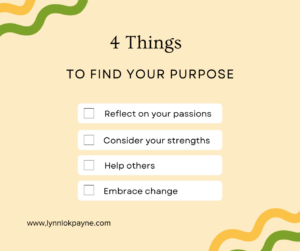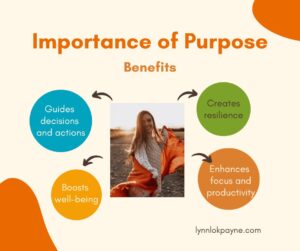
Revising your self-talk helps to change your story and flip the script. One way by paying attention to our emotions. Everyone has ranges of emotions—no one lives in just one emotional state. All of us fluctuate, sometimes within seconds, between the extremes. If you are sad or worried, happiness may not be on your radar. By understanding where you currently are, you can start revising your self-talk. It is important not to ignore your emotions, but to feel them. Once you do, it is easier to accept your present situation, and from there, more favorable changes can be made.
Emotions Have Energy
Christine Comaford, human behavior expert and leadership coach, created an Emotion Wheel,1 to help people recognize their current emotions versus where they really want to be. Many times we are resisting something and by examining it, then acknowledging how this makes us feel, we can choose a more beneficial emotion. Of course, we have to be open to letting go of our current state. Comaford shares, “Emotions have energy, and what we focus on, we fuel.”2
Esther Hicks’s book, Ask and It Is Given3, discusses an Emotional Guidance Scale we can use to find a higher-level thought. Hicks states that once we feel a better emotion, we should stay there a bit to make sure we have it, then reach for an even more desirable emotion. It is like going up a staircase. With each step we reach a more beneficial state. As we climb higher, more clarity emerges and we become more content, since there is less stress, fear, and doubt at higher levels. By choosing a different emotion, you can start revising your self-talk.
I may not be able to go from anger to joy instantly, but I can choose an improved emotion, like disappointment or frustration, to make the situation bearable. We can also find a neutral place where a situation won’t trouble us as much. When negative thinking appears, we can try to improve our thoughts. When we do, fate, coincidences (events happening by chance), and synchronicity (random events that do not seem to be connected but are meaningful) start to play in our favor, helping us to achieve our desires.
Take a small step in the direction of a dream and watch the synchronous doors flying open. — Julia Cameron, author, poet, filmmaker
Emotional Ranges
Our world exists in opposites, and there are various ranges within these extremes. Positive and negative, hot and cold, fire and ice, happy and sad, to name a few. Opposites are just two sides of the same coin—love and hate, strong and weak, everything and nothing, high and low. By looking at our emotional ranges, we learn where we are placing our attention. If I am attracting people and circumstances I do not want, I should consider if I am sending out that same energy. If the people I associate with are demanding, insecure, or are always complaining, I need to ask myself if I am I broadcasting these same vibes. Identifying this takes work. I have to pay attention to what others are doing and examine whether I am doing it too. People tend to befriend others who are like them.
To be successful, we don’t need to move mountains. Moving small rocks and pebbles, one at a time, will lead to change. We just have to start somewhere—one thought, one word, one motion. And when we reach the top, we can look back and see all the mountains we have overcome. Revising your self-talk starts with one small step.
Adjusting Behavior
I admit it. I am an emotional eater and sometimes turn to food in times of despair or stress hoping it will help me feel better. It is not a healthy habit but it can be soothing in the moment. When I’m finished, I am usually not satisfied. The problem is not the food itself, but the hidden intention—the unresolved feelings not being acknowledged.
Emotional energy can be stronger and more powerful than words. For example, take the phrase, “I want chocolate.” These words alone, without emotion attached, are not tempting. But when the emotion of desire is added to the wanting of chocolate, I really want chocolate now. This creates a mental, and possibly a physical, craving for chocolate that can result in the action of eating it. In feelings of sadness, loneliness, stress, or boredom, food can be a comforting companion. When this occurs, we are literally feeding our feelings, because strong emotions produce action.
Understanding the Why
To change this, we have to understand the reason, the why, behind the craving. Is it because of actual hunger? Or are we trying to stuff down an emotion we don’t want to deal with? Knowing the intention behind the craving is important. One clue that we are eating emotionally is when we look down at our plate and wonder, Where did it all go? If this happens, start asking, “Did I taste and enjoy it?” If not, pay more attention to the emotions behind your eating habits.
To get past the craving, I find it helps to physically do something different—getting up from the chair and taking a walk, making tea, or drinking water. Often, by waiting fifteen minutes or so, the craving to eat will pass. And if not, I go ahead and take a bite of what I crave, no guilt attached. We are striving for awareness, not perfection. Being aware of the “why” gives us more control over our actions, allowing us to choose a different response, like moving out of the kitchen and partaking in a more beneficial activity.
The process of examining our intentions can help with any area of our life where we exhibit unwanted actions. By being aware of our triggers, we can change our behavior by doing something different and revising our self-talk.
Techniques
There is benefit to paying attention to our feelings at the end of the day. If I feel worried or anxious before sleep, I may wake up worried and anxious. The brain does not shut off when we slumber. Writing down concerns before bedtime can help to stop the rumination, at least for a while, allowing us to rest. Or visualizing a better outcome to our troubles. By changing the ending to the worry, we can lessen anxiety. Performing a mini-meditation to slow down breathing can also be calming. When we create a peaceful state at nighttime, we may wake up more relaxed.
Lastly, when we feel good, it helps to know why. Are we having feelings of joy, confidence, freedom, I got this, or that life is great? Write down how these positive emotions feel as a reminder for times when you’re feeling down. It can be hard to remember what joy feels like in difficult times. Looking at the list may help to bring you into an improved space. Positive thoughts and emotions do have power and can influence life in a profound way. By revising your self-talk, you become the magnet for what you want to appear in your life. You are the solution.
Read part one https://lynnlokpayne.com/flip-the-script-and-change-your-story/
Photo by Markus Winkler on Unsplash
- Christine Comaford, “Emotions Have Energy: What Energy Are You Sending?,” Forbes, June 2, 2018, https://www.forbes.com/sites/christinecomaford/2018/06/02/emotions-have-energy-what-energy-are-you-sending/#75b8b56d2545.
- Ibid.
- Esther and Jerry Hicks, Ask and It Is Given (Carlsbad: Hay House Inc. 2004)







